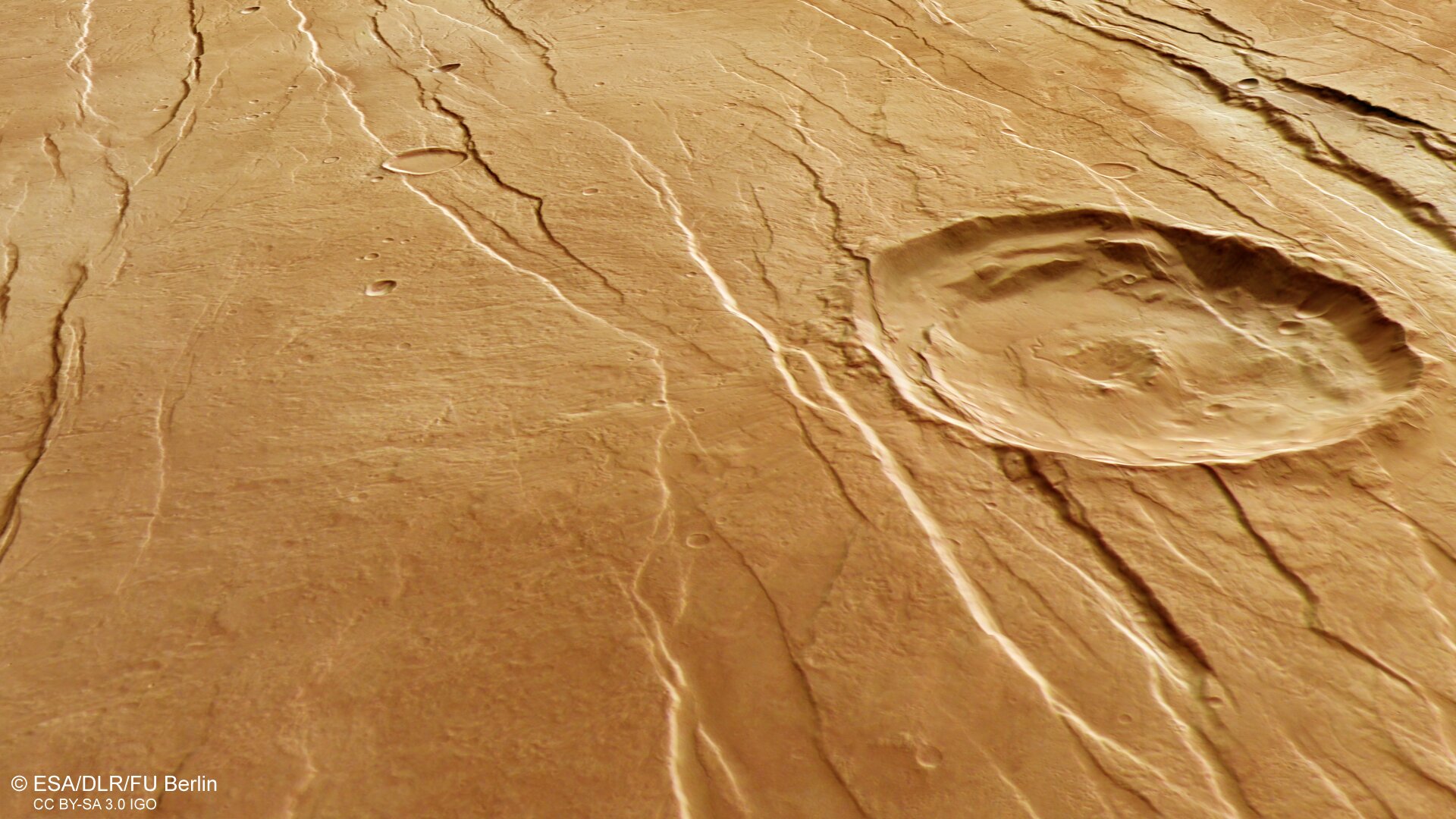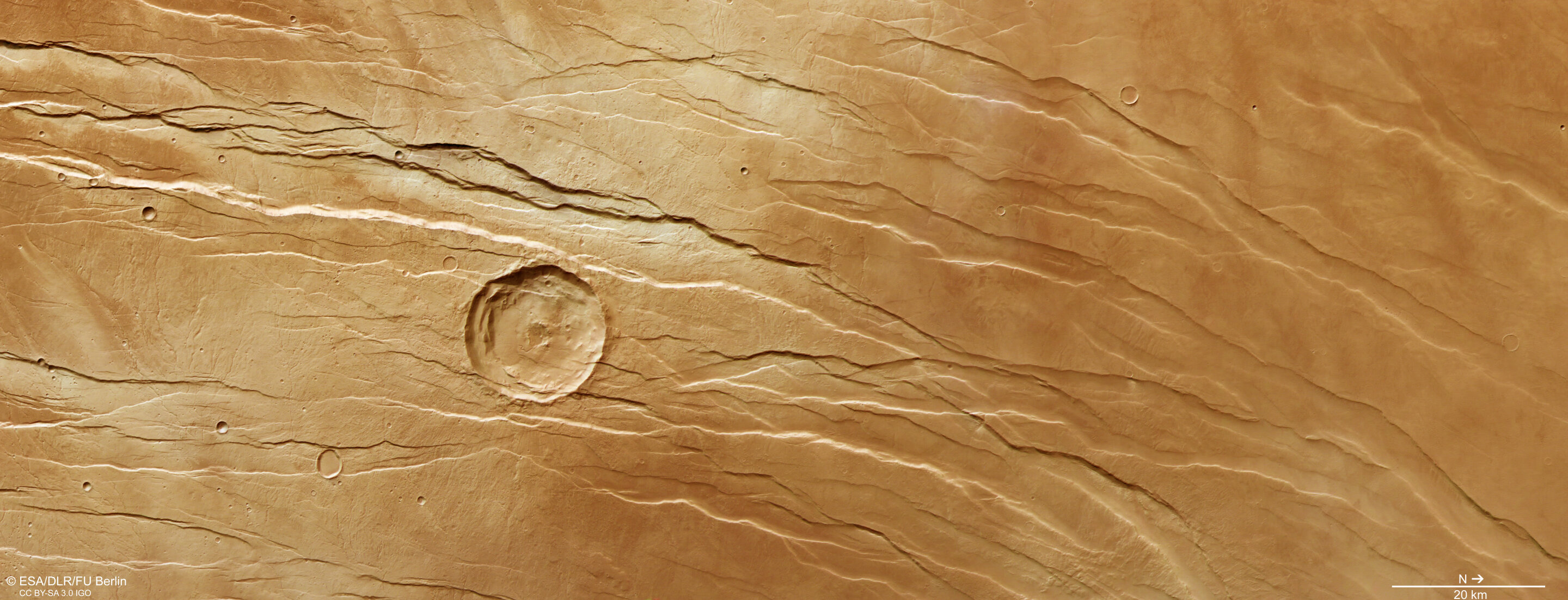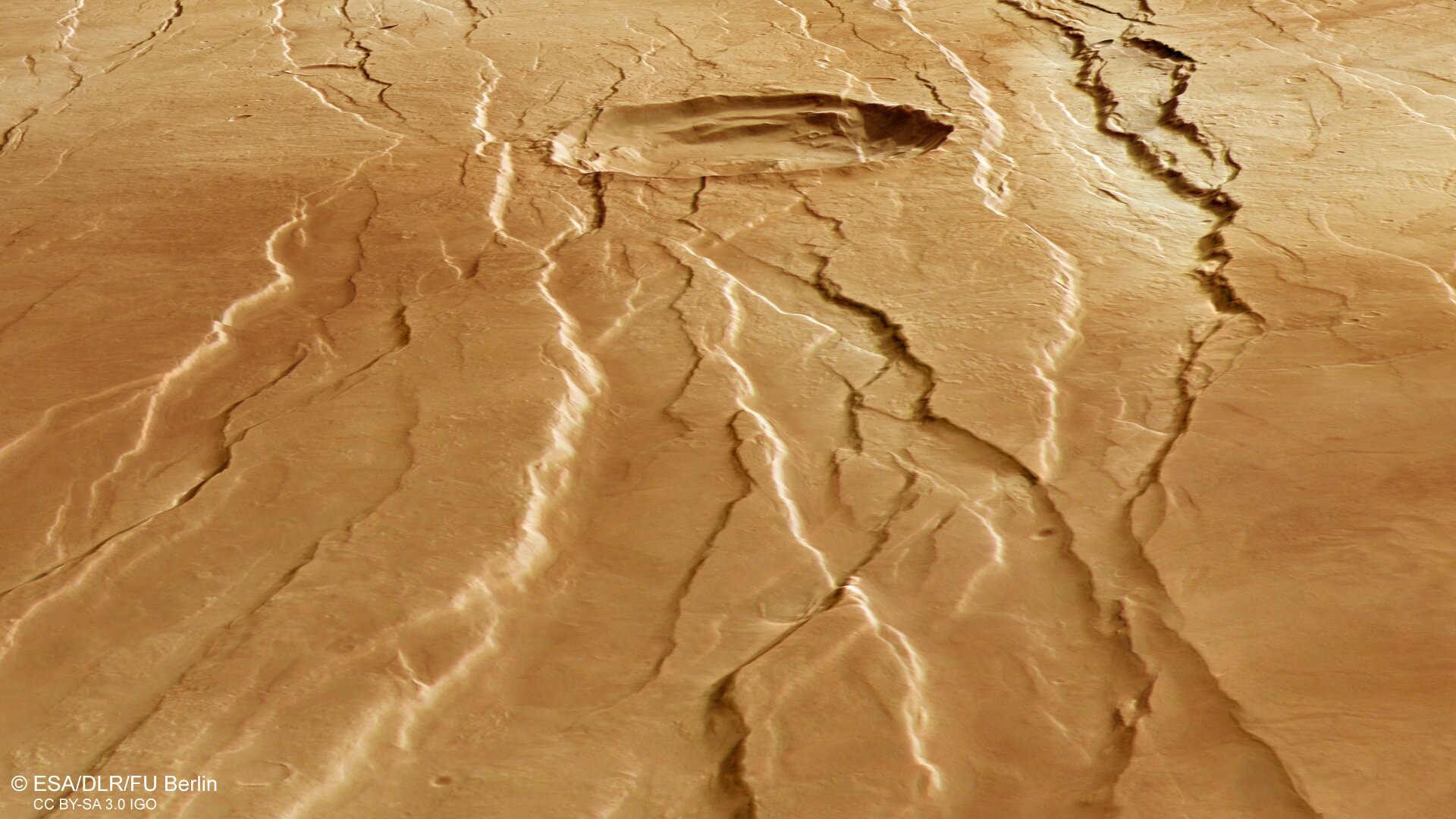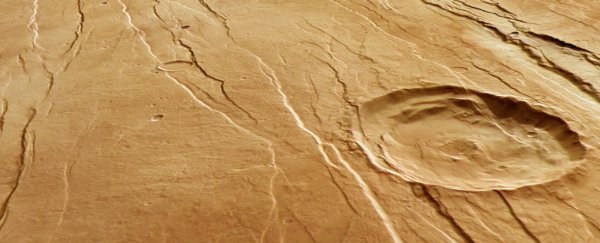While it still has plenty of mysteries for us to solve, Mars is becoming clearer to us every day, thanks to the dozen functioning robots we currently have either on the red planet's surface or in its orbit.
In this latest release from the European Space Agency's (ESA) Mars Express orbiter, a unique feature of Mars's geology is shown with breathtaking detail.
Looking like giant scratches across the planet's surface, these grooves are part of a giant fault system on Mars known as Tantalus Fossae.
Aside from the detail in the image, what's really gobsmacking is the scale we're looking at – these troughs are up to 350 meters (1,148 feet) deep and 10 kilometers wide (6.2 miles) and can stretch for up to 1,000 kilometers.
The image is true color, which means it represents what humans would see if they were looking at the region with their own eyes.
It's not technically a 'photo'; the image was generated from a digital terrain model of Mars and using the color channels of the High Resolution Stereo Camera on ESA's Mars Express – but it presents an incredibly clear view of the vast area.
 (ESA/DLR/FU Berlin, CC BY-SA 3.0 IGO)
(ESA/DLR/FU Berlin, CC BY-SA 3.0 IGO)
The image above shows an oblique perspective, while the shot below is a top-down view of Tantalus Fossae.
 (ESA/DLR/FU Berlin, CC BY-SA 3.0 IGO)
(ESA/DLR/FU Berlin, CC BY-SA 3.0 IGO)
According to an ESA press release, the ground resolution of these images is approximately 18 meters/pixel and the images are centered at about 43°N/257°E. North is to the right.
So what are we looking at?
A fossa is a hollow or depression, and Tantalus Fossae run along the east side of a sprawling, relatively flat Martian volcano called Alba Mons.
When it comes to surface area, Alba Mons is the biggest volcano on Mars – its volcanic flow fields extend at least 1,350 km (840 miles). But at its highest point, its elevation is only 6.8 kilometers.
These fossae were created when Alba Mons lifted up out of the planet's crust, causing the area around it to become warped and broken.
 (ESA/DLR/FU Berlin, CC BY-SA 3.0 IGO)
(ESA/DLR/FU Berlin, CC BY-SA 3.0 IGO)
"The Tantalus Fossae faults are a great example of a surface feature known as grabens," explains the release. "Each trench formed as two parallel faults opened up, causing the rock between to drop down into the resulting void."
A similar feature is found on the western side of Alba Mons, known as Alba Fossae.
These images aren't just beautiful to look at – they may also help us understand more about how the surface of Mars formed.
It's thought these structures didn't all form at once, but one after the other, which results in some of the troughs crisscrossing each other.
For example, the impact crater you see in the images has grabens running across it, suggesting the crater was there first. In the top two images, you can see a smaller crater to the left that's on top of the troughs and is likely younger.
Mars Express has been orbiting Mars for more than 18 years now. We look forward to seeing more of its unique views of our neighboring planet.
